Bacon and Mustard Beef Brisket In The Oven
Delicious tender beef brisket rubbed with a mixture of spicy gourmet mustard and brown sugar. The brisket is also covered with slices of bacon and baked in the oven.
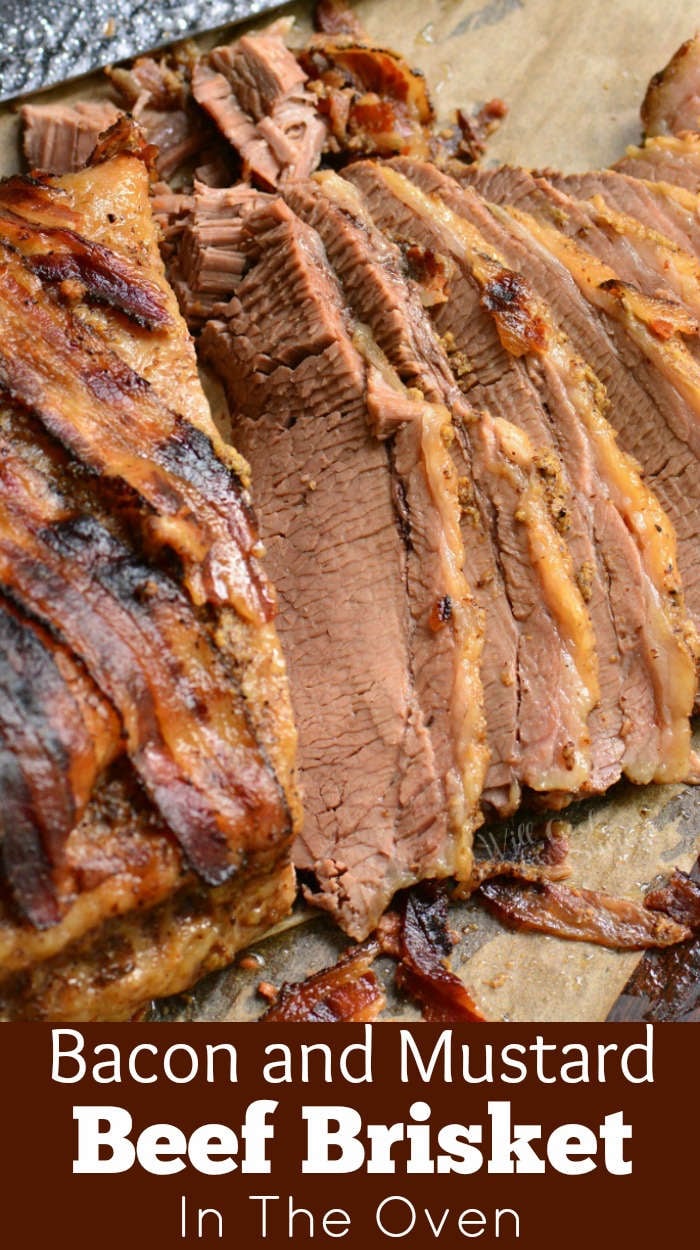
BEEF BRISKET IN THE OVEN
We love brisket. Huge fans of brisket at my house actually. To be honest, I am yet to find someone who is not a huge fan of brisket. So needless to say, we eat a lot of it.
It is no big secret that making brisket in the oven will never be the same as smoking it. Smoked brisket is a whole new world but that option is not always available. So when smoking is not available, it’s good to know that you can make a delicious brisket in the oven.
I’ve decided to do something different than a dry rub on a brisket this time. I took my favorite flavors of spicy mustard and brown sugar that you can see in the baked corned beef brisket and slathered is very generously all over the brisket. To top if all off, I covered the whole brisket in bacon.
Bacon doesn’t just provide additional flavor, it also provides a subtle touch of smokiness. I chose pepper and maple bacon to compliment the other flavors in the brisket.
WHAT BRISKET CUT TO CHOOSE
In the earlier post about cooking beef brisket in the oven, I used a flat cut. Many people prefer a flat because of the leaner meat and less fat. Grocery stores also carry more flat cuts of brisket than whole brisket because of the popularity. But, less fat always means less moisture and less flavor.
Whether I’m smoking brisket or cooking it in the oven, I try to get the whole brisket. The whole brisket is called a packer brisker and consists of the flat muscle and the point. The flat is the leaner muscle and the point is a much fattier part that has a thick layer of fat above and below.
This fat is what will make brisket so much more tender and moist, you definitely want to have a good 1/4 to 1/2 inch of fat cap and keep the point on.
COOKING BEEF BRISKET IN THE OVEN
Trim Brisket
Before starting to cook the brisket, lay it out on the big cutting board and look all around it. Flip the brisket fat cap down and trim off the silver skin that may still be left over and any large pieces of fat that may be underneath.
Then, flip the brisket back over, fat cap up, and see if there are any areas of fat on top that is too thick. If the fat is more than about 1/2 inch thick, trim it down. You do not want to take off all the fat of too much fat off the top because you will be compromising the tenderness and juiciness of the meat.
Prepare Brisket
Line some foil sheets in the roasting pan, overlapping each other. You will want to wrap the brisket in foil so judge how much foil will be needed based on the side of the brisket.
Rub brisket with salt all over. I like to use coarse salt instead of table salt. Mix mustard and brown sugar together and generously rub and coat the brisket all over. Layer a few slices of bacon in the roasting pan, in the foil, to be underneath the meat. Lay the brisket in the middle of the foil on top of bacon and layer the bacon slices on top of the brisket, side by side.
Wrap the brisket in foil not too tight but make sure there are no holes or open areas. Place the roasting pan with the brisket in the refrigerator overnight to help infuse it with some flavor.
When ready to cook it, take the brisket out of the refrigerator and let sit warm up for about an hour on the counter.
Cooking The Brisket
Preheat the oven and insert the leave-in meat thermometer into the thickest part of the brisket but make sure to hit the muscle not the fat. If you don’t have a leave-in thermometer, use a regular meat thermometer and take the brisket out of the oven to take the temperature. Make sure to close the oven door while taking the temperature.
Cook brisket until it reaches about 185° internally and open the foil. Bake the brisket open until it reaches 200°-202°. If you want to crisp up the bacon a little bit of top, turn the broiler to low until the bacon is crisped enough. Keep and eye on it because it will only take a few minutes.
What Is The Oven Temperature For Cooking Brisket?
I recommend cooking brisket in the oven at 300°.
After experimenting with lower temperatures, I found that it takes way too long to cook it. It’s not just the patience that runs out at that point, the tenderness gets affected as well. I’ve even had briskets stall in the oven at a lower temperature.
Oven is no smoker and longer doesn’t necessarily mean better because the brisket will start to dry out. It is especially true if you’re only cooking a flat cut.
Don’t get tempted to raise the temperature above 300° either. Brisket is a tough cut of meat and still should be cooked at lower temperature for longer period of time.
How Long To Cook Brisket In The Oven?
I get that question very often and I always feel bad that I can’t give an exact answer. But cooking meats is not like baking, meats are ready when they’re ready. There are so many factors that go into the time that it takes for meat to cook, it’s impossible to give the exact time.
Size of meat, amount of fat, quality of meat, and oven itself can affect cooking time. No piece of meat is the same be it a brisket, a steak, or a chicken breast. You can buy three similar briskets at the same time and they will all have different cook time.
So for that reason, I recommend using a meat thermometer to measure the temperature of the meat, rather than just time. For meats like chicken and steak, it’s easier to tell if it’s done by touch. But, when it comes to large pieces of meat like brisket, prime rib, or whole tenderloins, always use a thermometer.
The best example I can think of is when I was cooking an 8 lb brisket vs a 14 lb brisket. I was sure that my 14 lb brisket was going to take at least 14 hours to cook in the oven because smaller briskets until then took about 1 hour and a few minutes per pound to cook. When I coked the large brisket, it was up to temp and ready in about 9 hours.
HOW TO CUT BRISKET
After brisket has rested for a good 30-45 minutes, it’s time to slice it and devour.
Much like with any meat, you should cut the brisket against the grain. Unlike many other meats, it’s very hard to see the grain from the top since there is a layer of fat over it. The easiest way to see the grain on the brisket is to look on the bottom.
Even if the brisket is huge, you can lift the side of it and peek underneath to see which way the muscle is running. You should be able to see easily which way to cut.
Use a sharp knife! I can’t stress enough that the knife for cutting brisket should be nice and sharp because the meat is very tender. If knife is not sharp, it will pull apart instead of slicing. Don’t use a serrated knife because it also tends to pull the brisket apart instead of slicing it.
STORING AND REHEATING BEEF BRISKET
To store brisket:
Wrap cooled brisket in a sheet of parchment paper or butcher paper and then wrap it in some aluminum foil. If there is a large piece of brisket leftover, you can store it in a food storage container with a lid. Make sure it’s air-tight.
Keep in the refrigerator for 3-5 days.
To reheat brisket:
Preheat oven to 350° and slice cold brisket into thin slices. Loosely wrap the slices in foil.
Reheat the foil packets in the oven for 15-20 minutes, depending on how thick the slices are and how many slices there are in the foil. You can place foil wrapped brisket directly on the oven rack or on a baking sheet.
SOME MORE RECIPES TO TRY
Pepper Crusted Beef Tenderloin
If you made any of my recipes and shared them on Instagram, make sure to tag me @willcookforsmiles and #willcookforsmiles so I can see all the things you tried!
Connect with Will Cook For Smiles!
Be sure to click below and follow me on my social media, so you never miss a recipe.
Don’t forget to sign up for email, so you won’t miss any new recipes.
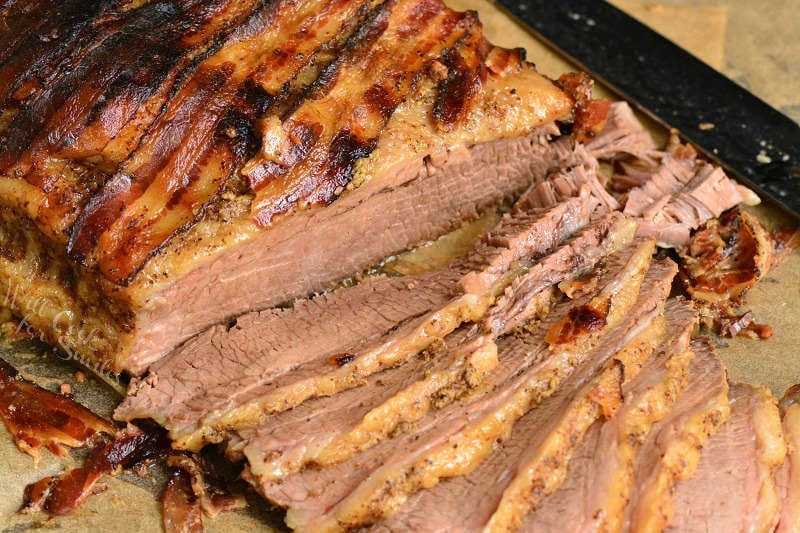
Bacon and Spicy Mustard Beef Brisket In The Oven
Ingredients
- 12 lb brisket (more or less as available)
- coarse salt
- 8 oz gourmet mustard
- 1 cup brown sugar
- 1.5 lbs bacon
Instructions
Trim Brisket:
- Flip the brisket fat cap down and trim off the silver skin that may still be left over and any large pieces of fat that may be underneath.
- Then, flip the brisket back over, fat cap up, and see if there are any areas of fat on top that is too thick. If the fat is more than about 1/2 inch thick, trim it down. You do not want to take off all the fat of too much fat off the top because you will be compromising the tenderness and juiciness of the meat.
Prepare Brisket:
- Line some foil sheets in the roasting pan, overlapping each other. You will want to wrap the brisket in foil so judge how much foil will be needed based on the side of the brisket. You may been an extra sheet to cover the top.
- Pour some salt out into a small bowl and rub brisket with salt all over.
- Mix mustard and brown sugar together and generously rub and coat the brisket all over.
- Layer a few slices of bacon in the roasting pan, on the foil, to be underneath the meat. Lay the brisket in the middle of the foil on top of bacon and layer the bacon slices on top of the brisket, side by side.
- Wrap the brisket in foil not too tight but make sure there are no holes or open areas. Place the roasting pan with the brisket in the refrigerator overnight to help infuse it with some flavor.
Cook Brisket:
- Take the brisket out of the refrigerator and let sit warm up for about an hour on the counter.
- Preheat oven to 300°.
- Insert the leave-in meat thermometer into the thickest part of the brisket but make sure to hit the muscle not the fat.
- If you don’t have a leave-in thermometer, use a regular meat thermometer and take the brisket out of the oven to take the temperature. Make sure to close the oven door while taking the temperature.
- Cook brisket until it reaches about 185° internally and open the foil. Bake the brisket open until it reaches 200°-202°. If you want to crisp up the bacon a little bit of top, turn the broiler to low until the bacon is crisped enough. Keep an eye on it because it will only take a few minutes.
Rest Brisket:
- Once the brisket is done transfer it onto a large cutting board and tent it with a sheet of foil. Let it rest for 30-45 minutes.
Slice Brisket:
- Slice brisket against the grain and make sure to use a sharp knife!
- The easiest way to see the grain on the brisket is to look on the bottom. Even if the brisket is too big to flip, you can lift one side of it and peek underneath to see which way the muscle is running. You should be able to see easily which way to cut.
Additional Tip:
- Save the juices from cooking the brisket. Pour the juices into a small pot and refrigerate. Once it's cold, you will be able to scrape the fat off the top. The remaining liquid can be used to make delicious gravy. This great is great on mashed potatoes or sandwiches.
Notes
Nutrition
All images and text ©Lyubov Brooke for ©Will Cook For Smiles. Please do not use my images without prior permission. If using my posts in collections and features, please link back to this post for the recipe.
Disclaimer: Nutrition information shown is not guaranteed to be 100% accurate as most ingredients and brands have variations.
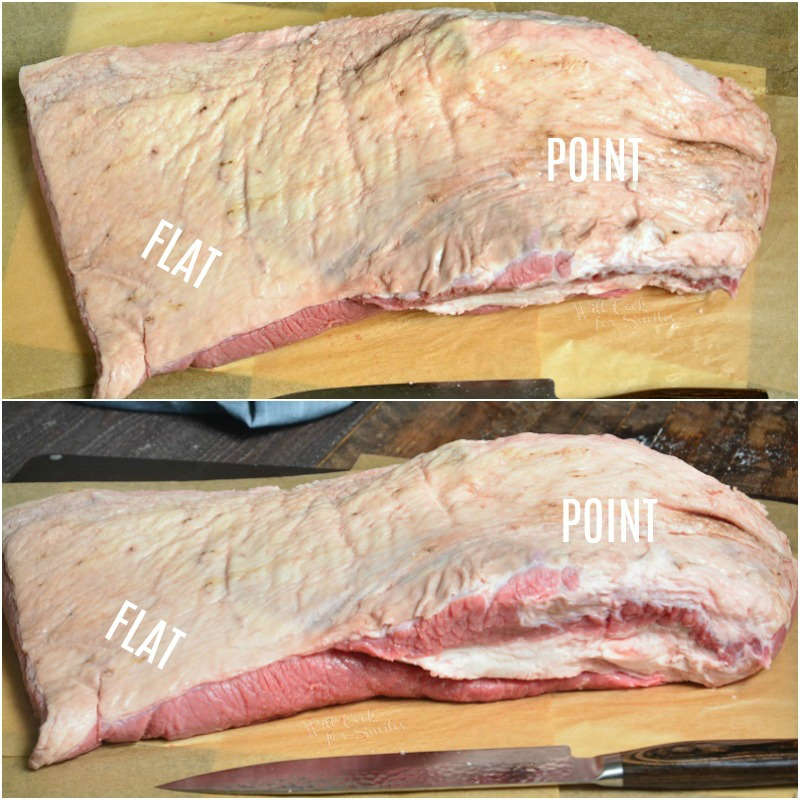
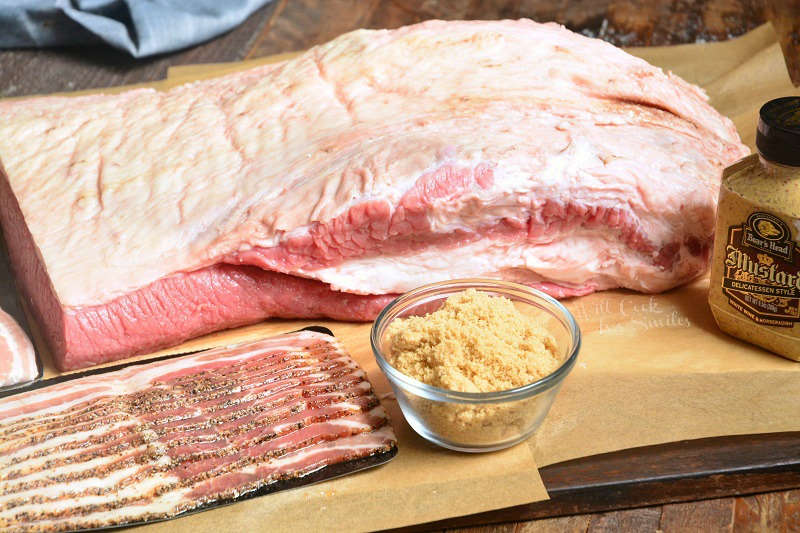
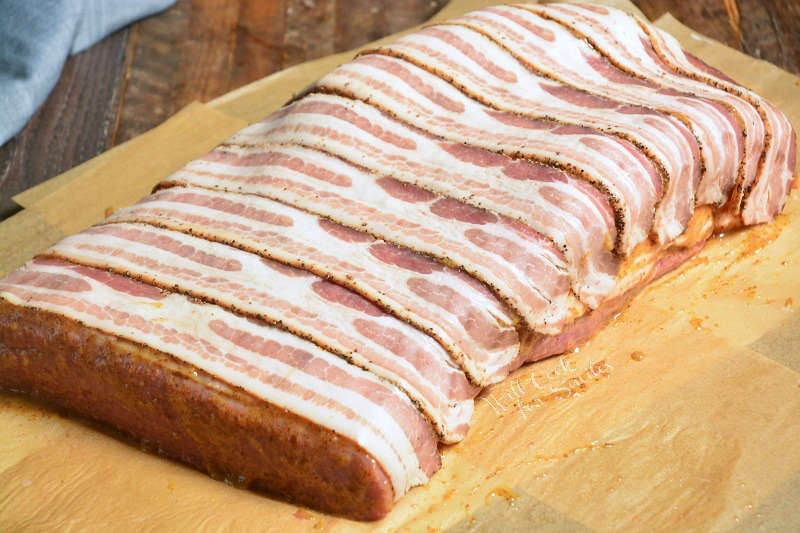
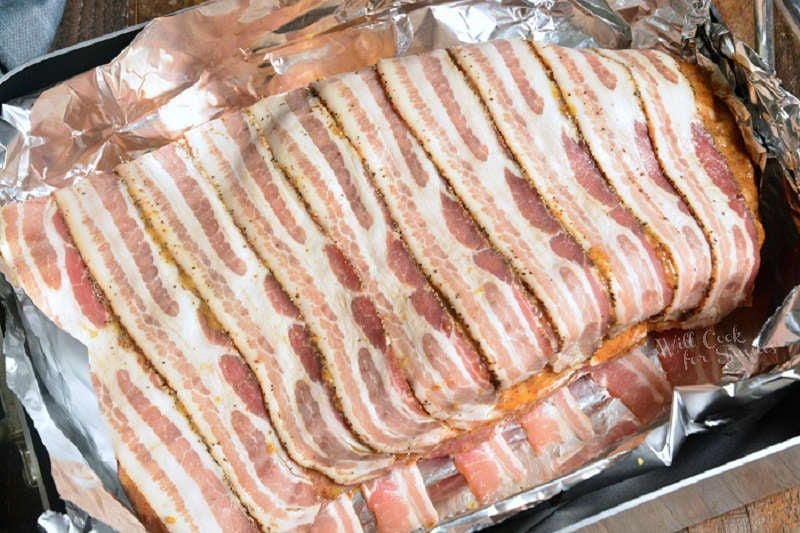
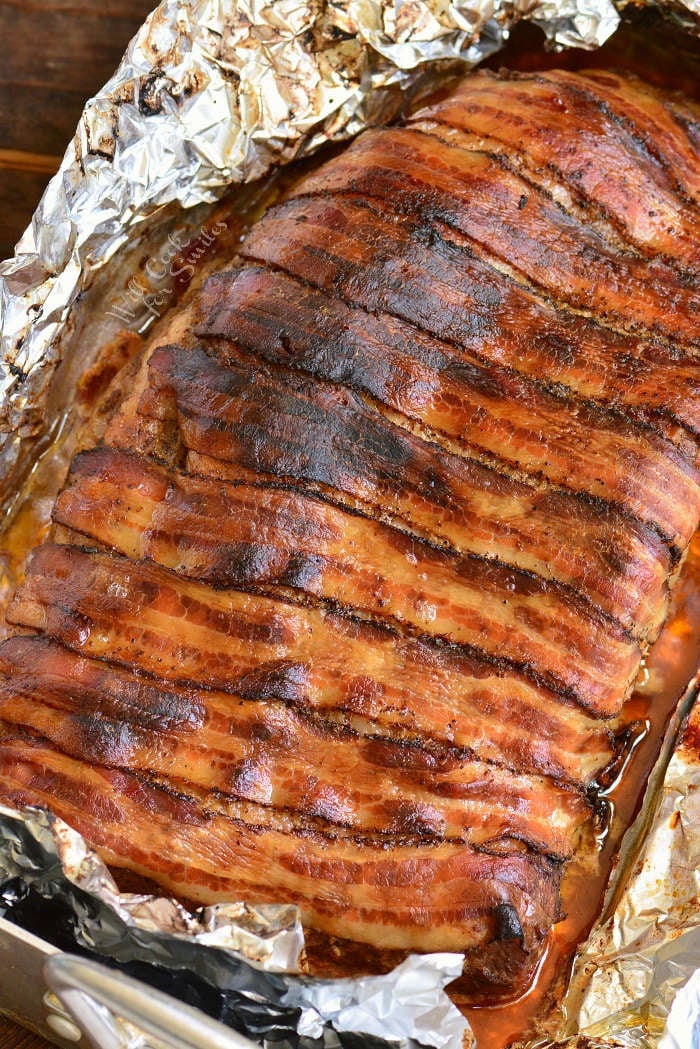
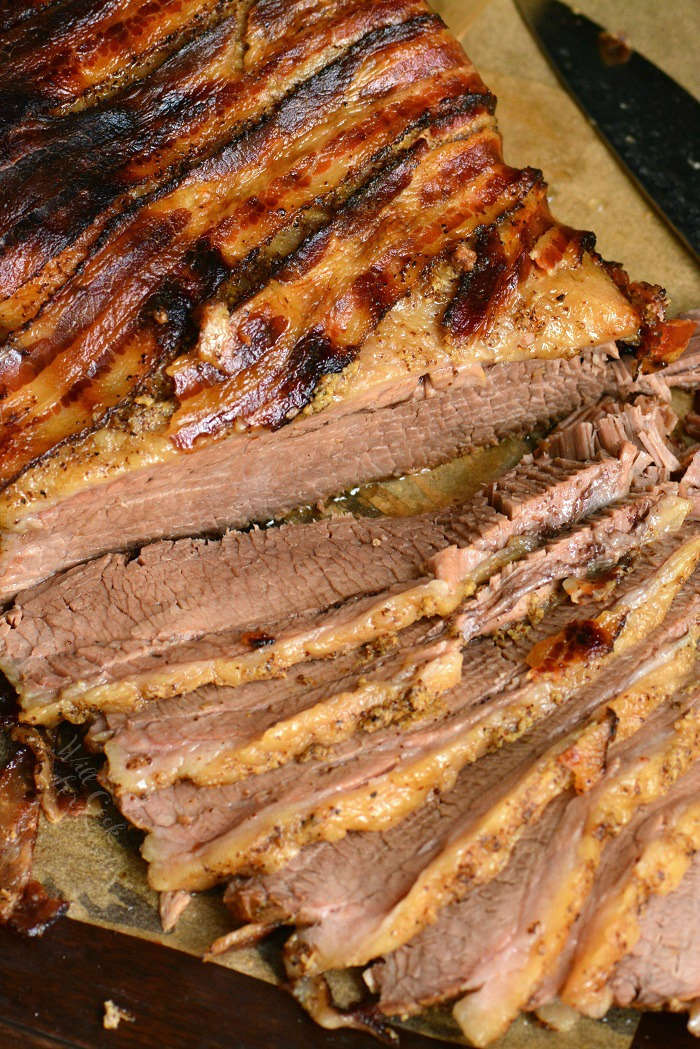
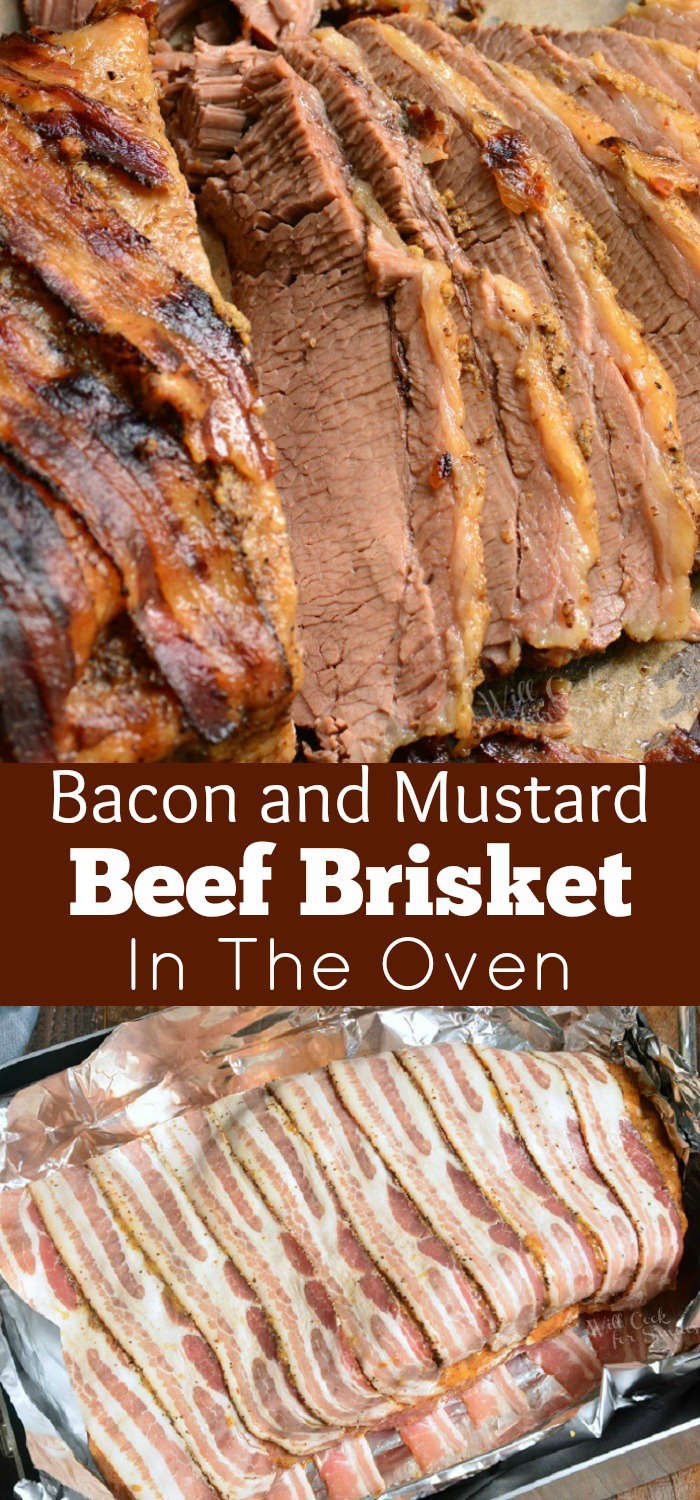
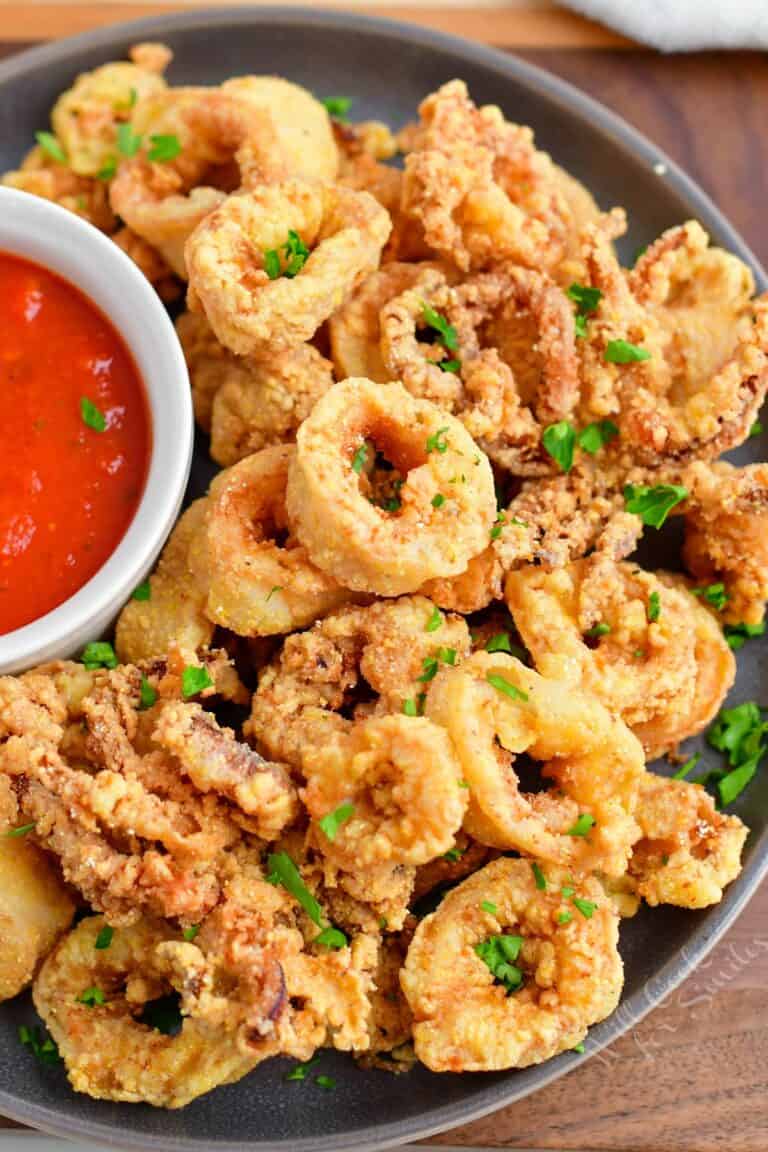
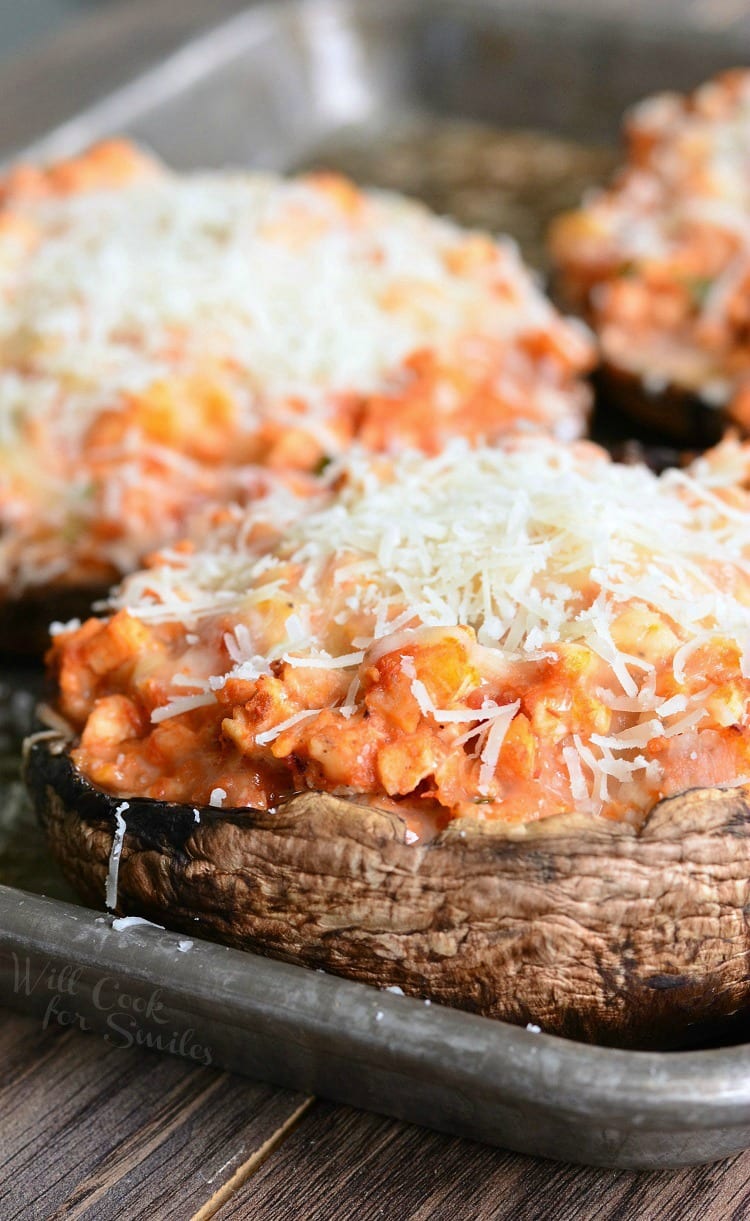
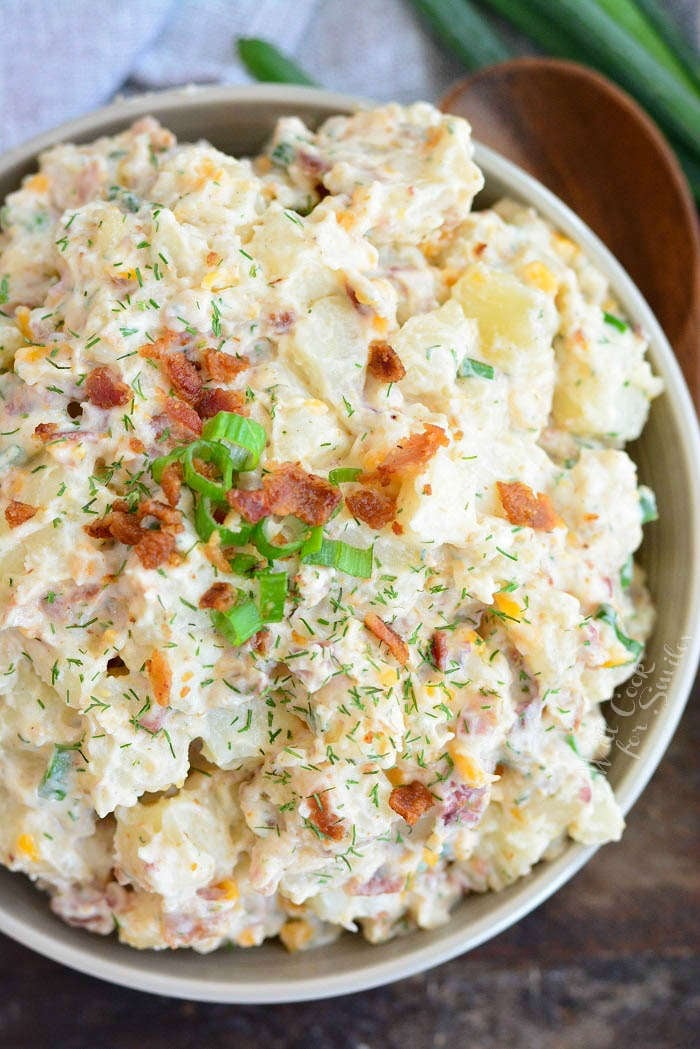
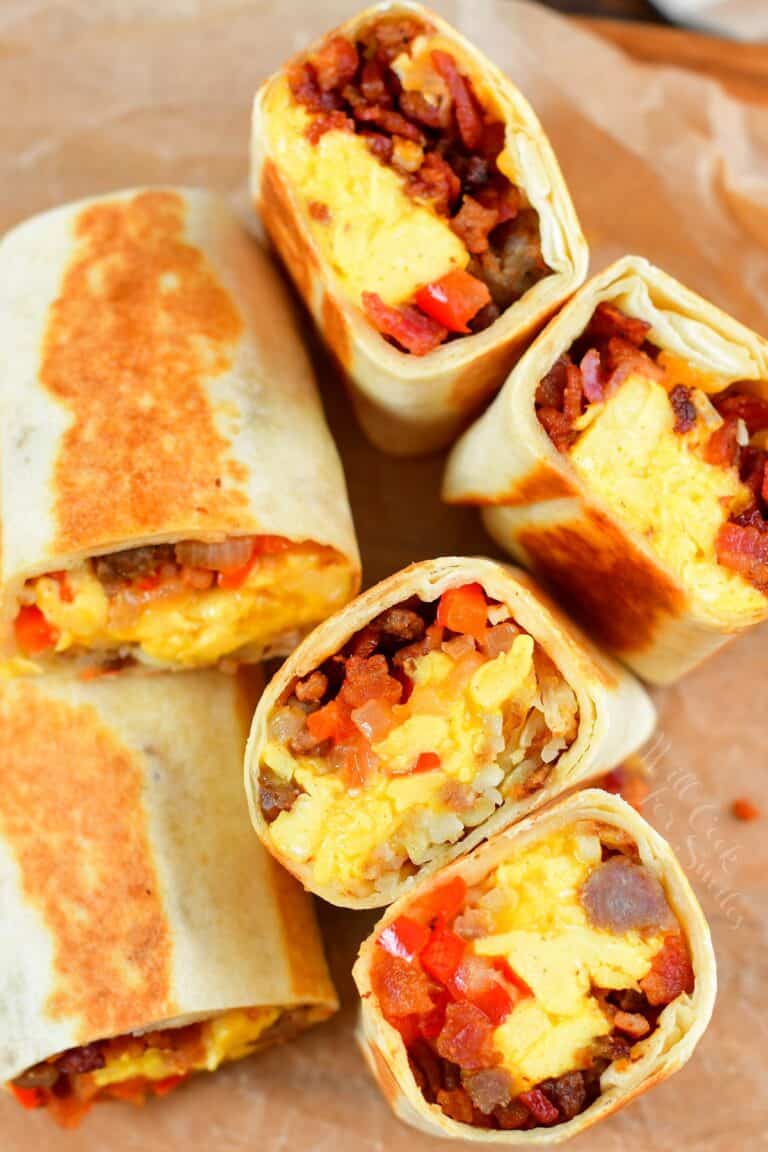
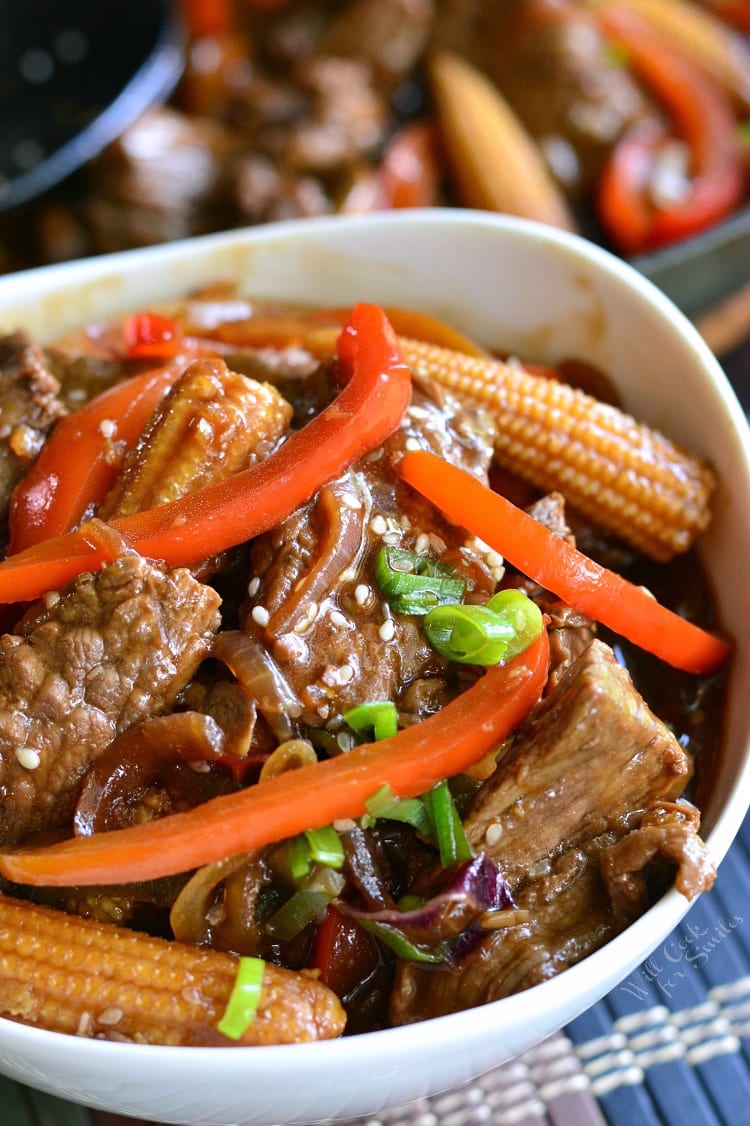
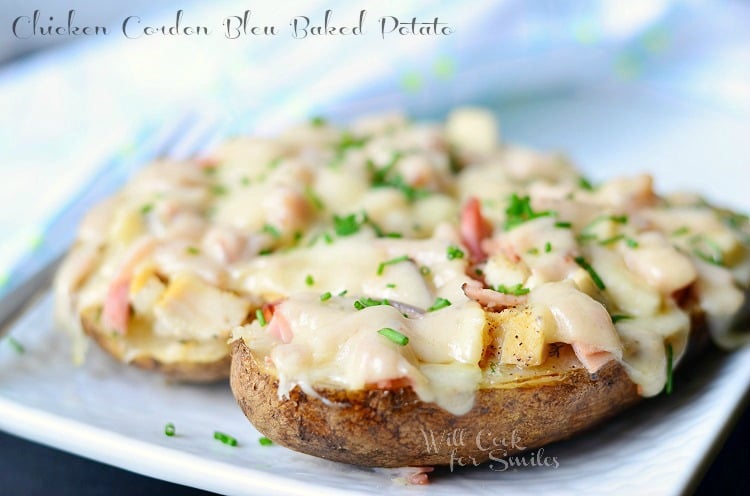








this recipe was moist and delicious